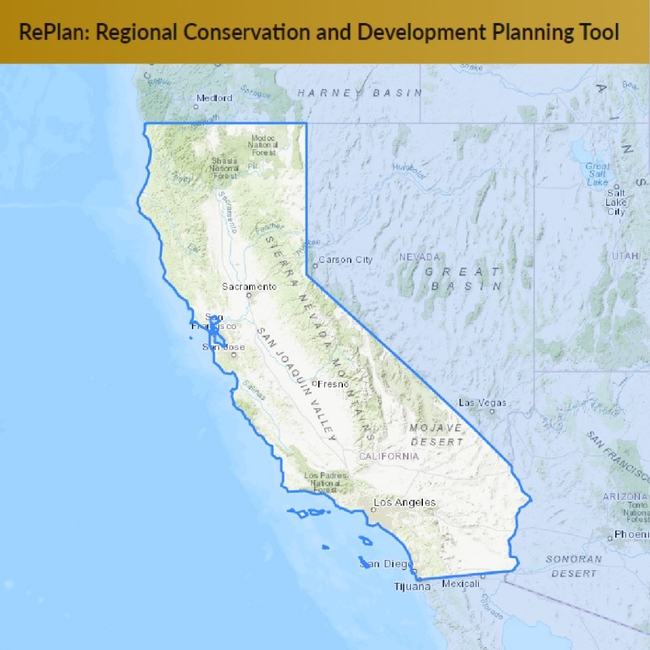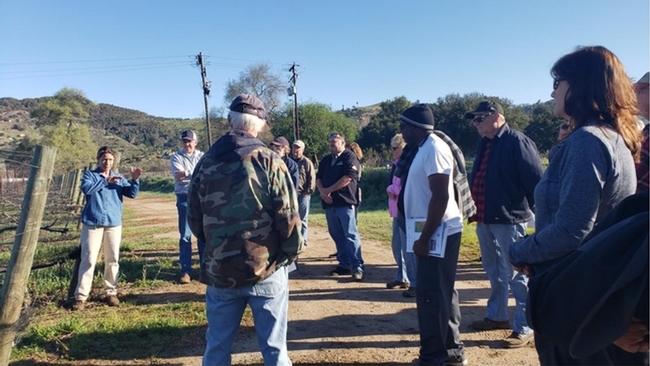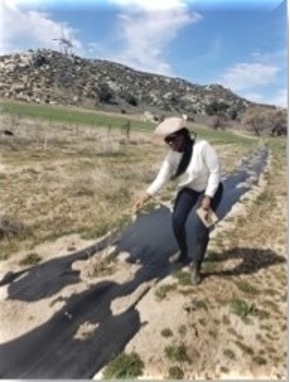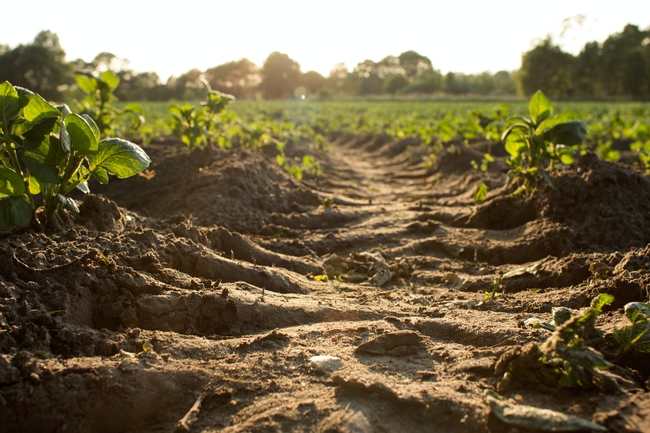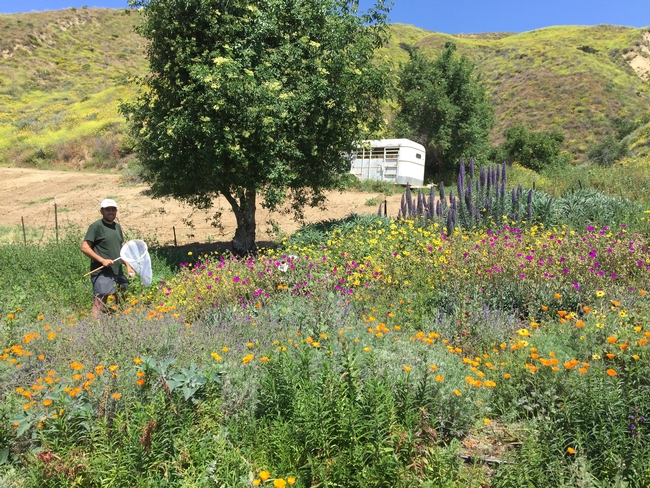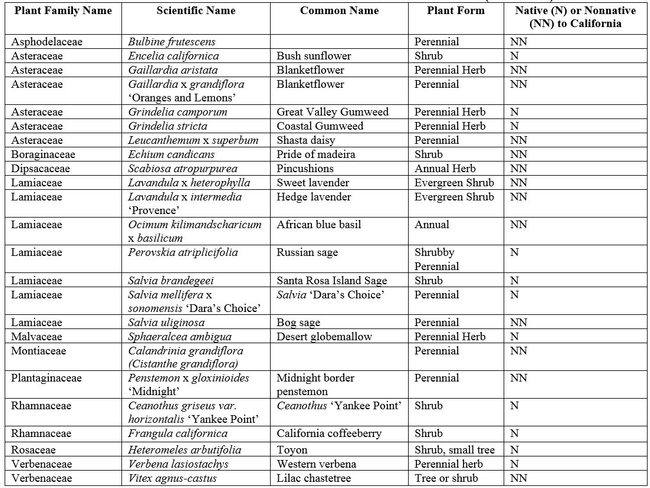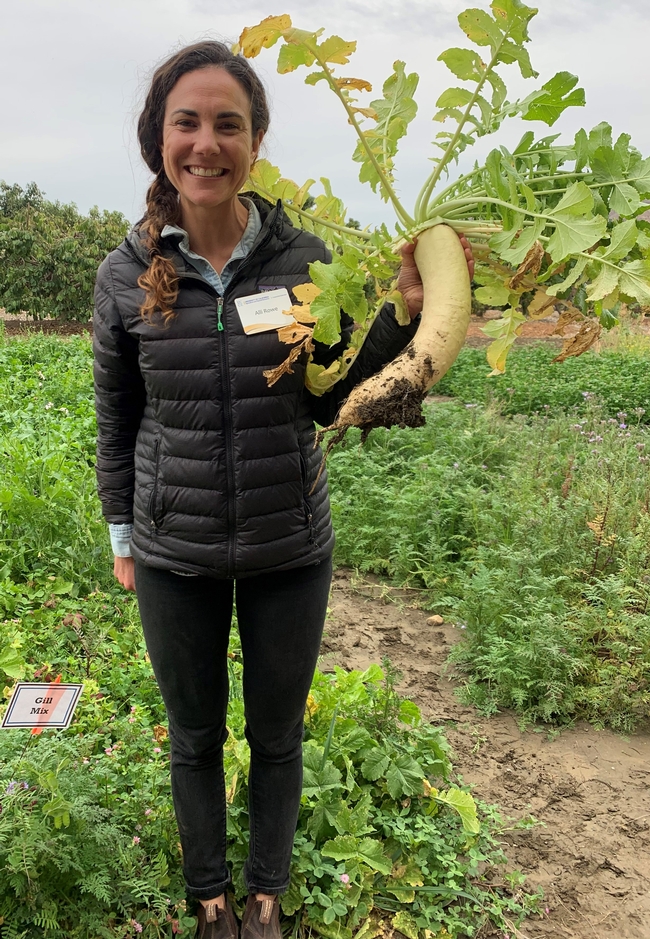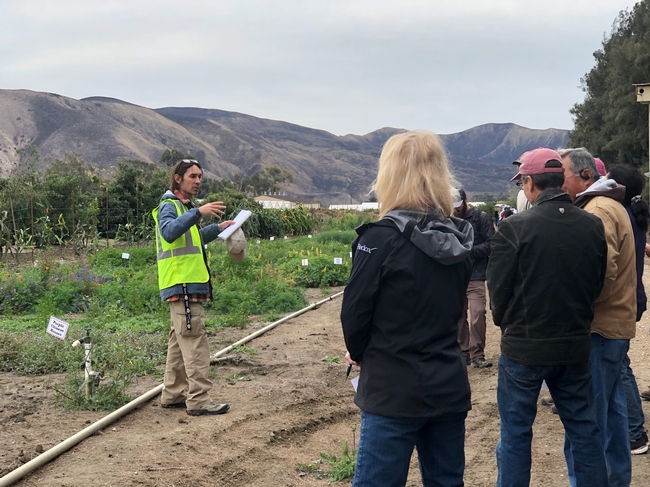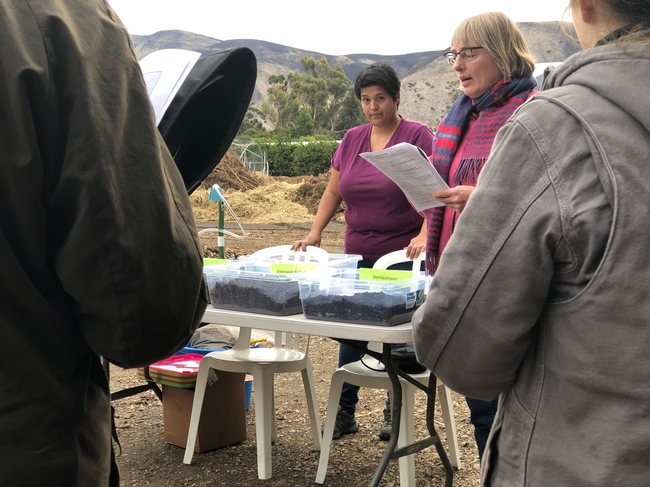
Posts Tagged: climate smart
Applying for Climate Smart Funding - Fast
|
Office of Public Affairs posted: " A new tool designed to provide farmers and ranchers with essential information about applications for climate smart agriculture programs is now available online. the tool features a user-friendly map for users to explore, screen and efficiently ident" |
Application Process for Climate Smart Ag Programs
A new tool designed to provide farmers and ranchers with essential information about applications for climate smart agriculture programs is now available online. the tool features a user-friendly map for users to explore, screen and efficiently identify regions for analysis, comparison and reporting. The intent is to place this information at the fingertips of farmers and ranchers, making the application process faster, and more efficient. The web-based tool, named RePlan (Regional Conservation and Development Planning Tool), comes as a result of a partnership between the California Department of Food and Agriculture (CDFA), the Governor's Office of Planning and Research (OPR), and the Conservation Biology Institute (CBI). RePlan developers have created applications for two CDFA programs -- the Healthy Soils Program (HSP) and the Alternative Manure Management Program (AMMP). For HSP, RePlan combines site location technology and environmental datasets in a user-friendly website to assist applicants in determining eligible individual innovation soil management practices as well as the compatibility of multiple practices. For AMMP, the tool combines relevant datasets with site location and analysis tools to identify practices that will reduce dairy and livestock methane emissions through the implementation of non-digester approaches. In one step, a farmer can model current and proposed practices, explore alternative practices, calculate the resulting emission reductions using California Air Resources Board tools, and submit a final proposal package for AMMP funding. The Partners The California Strategic Growth Council (SGC) collaborates with public agencies, communities, and stakeholders to achieve sustainability, equity, economic prosperity, and quality of life for all. SGC also manages several grant programs funded by the California Climate Investments (CCI) that aim to reduce greenhouse gas emissions while providing also providing a variety of other benefits - particularly in disadvantaged communities. The Governor's Office of Planning and Research (OPR) studies future research and planning needs, fosters goal-driven collaboration, and provides guidance to state partners and local communities, with a focus on land use and community development, climate risk and resilience, and high-road economic development. The Conservation Biology Institute (CBI) applies the best science and technology available to accelerate the conservation, recovery, and adaptation of biological diversity in a fast-changing world. Their expertise includes GIS and decision-support tools, global forest conservation, landscape modeling, water, energy, and infrastructure development. CBI created Data Basin in response to the increased demand for geographic environmental and conservation data access, integration, interpretation, analysis, and sharing. |
https://plantingseedsblog.cdfa.ca.gov/wordpress/wp-content/uploads/2022/04/RePlan-Blog-Image.png
https://plantingseedsblog.cdfa.ca.gov/wordpress
Healthy Soils and Smart Agriculture
- Contributor: Kristian M Salgado
- Contributor: Emily Lovell
- Contributor: Caddie Bergren
- Contributor: Nicki Anderson
- Contributor: Shulamit Shroder
- Contributor: Samikshya Budhathoki
- Contributor: Esther Mosase
- Contributor: Valerie Perez
UC ANR Climate Smart Agriculture Educator team assisted growers to win CDFA grants that reduced greenhouse gases equivalent to removing roughly 7,000 cars off the road, supporting UC ANR's public value of building climate-resilient communities and ecosystems.
The Issue
Increasingly extreme and erratic weather patterns caused by climate change threaten crop yields and farm profits across the state. Growers must continue to adapt to climate stressors, such as increased temperatures and occurrences of drought, and can aid in reducing climate change through their farming practices.
How UC Delivers
A collaborative partnership between the Strategic Growth Council, California Department of Food and Agriculture (CDFA), and University of California Agriculture and Natural Resources (UC ANR) teamed up to support 10 Climate Smart Agriculture Community Education Specialists (CSA CES) throughout the state to provide technical assistance and outreach to promote Climate-Smart Agriculture Incentive Programs. These programs include:
- The Healthy Soils Program, which incentivizes the implementation of climate-smart agriculture practices such as cover cropping, composting, crop rotation, and mulching which reduce erosion and greenhouse gases
- The State Water Efficiency and Enhancement Program (SWEEP), which encourages farmers to install more efficient irrigation systems that decrease water consumption and greenhouse gas (GHG) emissions; and
- The Alternative Manure Management Program (AMMP), which awards funds to livestock producers who decrease their methane emissions by changing the way they manage manure.
Since establishing this partnership in 2019, the UC ANR Climate Smart Agriculture Educator team has provided hands-on assistance to over 200 farmers and ranchers through the complex application process. Collaborating with other CDFA technical providers to host workshops, field days, and events has expanded reach to a greater number of growers, over 120 of whom were able to receive funding after receiving technical assistance. UC CSA CES efforts don't stop at the outreach or application phase; educators work year-round to ensure successful implementation of climate-smart projects.
After the award process, educators assist awardees in completing grant invoicing and contract reporting requirements and connect them with vendors, industry experts, and service providers. UC CSA CES also engage in a variety of additional support activities. For example, to help establish successful cover crop adoption, one educator created a cover crop decision-making tool. A different educator started a small compost spreader rental program to assist small growers in spreading compost. Another facilitates full project management through translation services to a cooperative of Cantonese-speaking awardees.
The Impact
Through assisting awardees in the adoption of practices such as cover cropping, installing solar panels, and installing dairy manure solid separator systems, the 10 UC CSA CES have collectively supported growers in reducing 33,000 MT/CO2 per year, as measured by California Air and Resources Board (CARB) Green House Gas Emission reduction calculator (SWEEP GHG Calculator on CDFA's website), and the HSP Comet planner tool. That's equivalent to removing 7,000 cars from the road per year.
Table A provides an overview of how much GHG has reduced in counties where the UC Climate Smart Agriculture Educator team has helped farmers implement climate-smart practices. Totals for all projects are much higher.
|
UCCE-County Location |
Total CO2 equivalent in MT/year |
|
Sonoma, Mendocino, and Lake County |
314.2 |
|
Merced, Madera, Stanislaus |
5263.31 |
|
Glenn, Butte, Colusa, Tehama County |
4545.785 |
|
Yolo, Solano, Sacramento, San Joaquin, El Dorado, Sonoma, Colusa, Sutter |
11716.4 |
|
Santa Clara County |
58.85 |
|
Fresno County |
1353.924 |
|
Kern & Tulare Counties |
7060.283 |
|
Santa Barbara, Los Angeles, Orange, Ventura County |
630.5 |
|
San Diego and Riverside Counties |
300.18 |
|
Imperial County and Riverside County |
3689.1 |
Glenn County grower, Shannon Douglass says, “When producers have the support from the UCCE office that they already know and trust, they are more willing to implement new practices. The application process is intimidating, but with the help from UC, soil healthy practices are becoming much more widely adopted.”
Research shows that Healthy Soils Program practices such as compost application increases the amount of organic matter in soil, amongst numerous other benefits such as increasing the water and nutrient retention capacity of soils, providing a reservoir of nutrients for plants, improving aeration, improving water infiltration, reducing soil erosion, and supporting the abundance and diversity of soil organisms, which can improve plant health. Compost application is just one fundable practice farmers can implement to help reduce greenhouse gases on their operation.
Thanks to this unique partnership with CDFA, UC ANR is able to provide hands-on support to farmers statewide so that they can improve the health of their soils, reduce livestock methane emissions, and improve water use efficiency. In this way, the Climate-Smart Agriculture program contributes to UC ANR's public value of building climate-resilient communities and ecosystems.

bell bean
4-H Distance Learning Resources Available, Hedgerows for Healthy Soil and More
Online Educational Resources
Since we're all learning and working from home, our education team has created a virtual learning page packed with wonderful resources about agriculture. You can enjoy these lessons and stories from your computer, tablet or phone. Check back often, as we're adding content.
The Buzz About Hedgerows
Hedgerows are an approved practice under California Department of Agriculture's Healthy Soils Grant Program. That means, growers are eligible to receive grant funding for planting hedgerows. But what exactly are the benefits of hedgerows and why are they worth planting? As a perennial planting it can have immediate impacts on the soil, but what else? The answer lies largely in the pollinators and beneficial insects they attract.
Read the latest from our #climatesmart #ag community education specialist Alli Fish.
Resources You Can Use
University of California researchers and program staff are working to answer questions and provide information and resources relating to the food system and COVID-19. Check out this post, which contains resources about food and farm safety, gardening and more.
UC ANR Expands the Role & Reach of its Sustainable Ag Program
University of California vice president for agriculture and natural resources Glenda Humiston has announced changes to UC ANR's Sustainable Agriculture Research and Education Program (SAREP).
"Since 1986, SAREP has supported scientific research and education to advance agricultural and food systems that are economically viable, sustain beneficial ecosystem services, and enhance the quality of life in local communities. Moving forward, California farms and food systems face an ever-larger set of challenges: shifting consumer demands,invasive pests, climate change, additional regulations, lack of access to labor, and more. The need for new technologies, better systems and effective problem-solving is greater than ever.
“UC ANR envisions positioning SAREP to serve as a much broader umbrella of sustainability, addressing all aspects of the triple-bottom-line: people, planet and prosperity,” Humiston said. “To accomplish this, SAREP will provide leadership and support to several promising initiatives and will facilitate our ability to capture synergies among them. Those include agritourism, ecosystem services, regional food systems, community and economic development and more.”
The full announcement is available here.
Are You Following Us on Social Media?
We'd love to see you on Facebook and Instagram. Follow us for news and information you can use.
Have a great week!
The Buzz About Hedgerows
Hedgerows are an approved practice under California Department of Agriculture's Healthy Soils Grant Program. That means, growers are eligible to receive grant funding for planting hedgerows. But what exactly are the benefits of hedgerows and why are they worth planting? As a perennial planting it can have immediate impacts on the soil, but what else? The answer lies large in the pollinators and beneficial insects they attract.
The most basic definition of a hedgerow is dense vegetation planted in a linear design. Perennial grasses, shrubs, and even short trees are all candidates for hedgerow plantings, provided they meet the conditions of the local climate and soil. Growers plant hedgerows to achieve one or more of the following desired outcomes:
- To increase habitat for pollinator and beneficial insect populations
- To create a living barrier or fence
- To reduce chemical drift or odor movement
- To intercept airborne particulate matter
- To act as a low windbreak or reduce dust
- To increase carbon storage in biomass and soils
- To provide food, shelter, and shade for aquatic organisms in nearby aquatic habitats
All of these benefits make the case for planting hedgerows on any agricultural operation. In Ventura County, avocado growers stand to see a compelling case for hedgerow plantings with particular attention to pollination services.
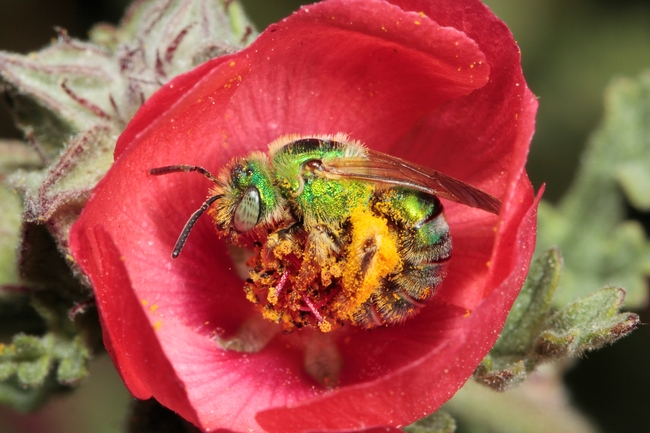
There are many different pollinators who visit avocado flowers, from native bees to flies to honey bees. Some come in the daytime, others visit at night. In the likelihood that honey bees and other pollinators will continue to decline, it is imperative to study the importance of native pollinators on key crops and identify ways to increase habitat for resident populations (NRC 2007; Nordhaus 2011; PHTF 2015; Koh et al. 2016; Sánchez-Bayo and Wyckhuys 2019; DiBartolomeis et al. 2019; Garibaldi et al. 2013). This information not only helps the pollinator populations thrive, but helps avocado growers acquire free increased pollination services for fruitful trees. Several researchers have published accounts of increased pollinator diversity and numbers in hedgerow and field edge planting studies across various agricultural systems (Heller et al. 2019; Long and Anderson 2010; Long et al. 2017; Williams et al. 2015).
In Ventura County, we are seeing some fascinating and relevant research around the impact of hedgerows on pollinators in avocado orchards. A collaborative research project involving Dr. Ben Faber, Avocado Advisor for UC Cooperative Extension Ventura County, and Dr. Gordon Frankie, professor and research entomologist at UC Berkeley and lead investigator of the UC Berkeley Urban Bee Lab, seeks to understand long-term impacts of hedgerows on pollinators of avocado trees. The project, which began in 2014 with three participating avocado ranches, has indicated increased pollinator activity, increased native bee populations, and increased diversity of species with the presence of hedgerow plantings (Frankie, Faber et al. 2020). The results indicate the importance of diversity of pollinator species, not just the honeybee, to avocados. In continuing this research, the team seeks to address the unanswered questions of which pollinators are the most effective at pollinating avocados and which are the most effective at influencing fruit set. A particularly exciting and novel aspect of this project is looking at whether or not there are nocturnal pollinators visiting California avocados. Nocturnal pollinators have been well documented in New Zealand (Pattemore et al, 2018), but none have been yet recorded in California avocados.
Maintaining hedgerows is critical to providing additional habitat for an abundance of pollinators. Creating and maintaining that hedgerow and for which pollinators can be a daunting task to embark on. Luckily for avocado growers, Dr. Frankie and Dr. Faber's team are working with Southern California growers to develop a pollinator garden manual. The manual will provide clear pictures of key pollinators and key plant species that pollinators are drawn to. Detailed imagery, descriptions, and maintenance tips will help make the decision making around planting a hedgerow much easier.
Speaking of selections, there are key plants that are drought-tolerant, easy to maintain, and well-suited for Ventura County's climate. See the table below for some ideas.
Table 1. Main Native Bee Plants Installed in Avocado Orchards 2014-2019
We seek to increase biodiversity, build soil health, and reduce energy use in our agricultural systems to improve our resiliency to climate change impacts, pests, and disease. To keep farming in our families and in our futures. Planting hedgerows is good for the pollinators, which is good for the bottom line and long-term success of the operation.
If you are an avocado grower interested in learning more about the pollinator research project, please contact Dr. Gordon Frankie at the UC Berkeley Urban Bee Lab gwfrankie@berkeley.edu.
Interested in planting hedgerows on your property? You may be able to qualify for a grant through CDFA's Healthy Soils Grant Program to plant hedgerows. Please contact Jamie Whiteford with the Ventura County Resource Conservation District at jamiewhiteford.vcrcd@gmail.comfor more information on how to apply. For those in other areas, Technical Assistance providers are able to discuss the values of hedgerows and funding opportunities for installing them in other agricultural situations: http://ciwr.ucanr.edu/Programs/ClimateSmartAg/TechnicalAssistanceProviders/
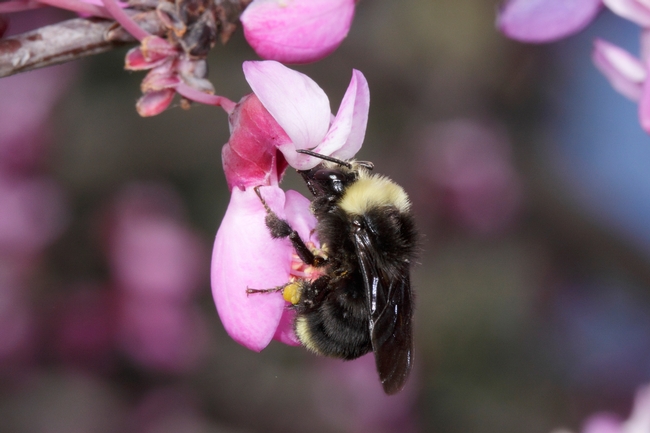
References Cited
DiBartolomeis, M., S. Kegley, P. Mineau, R. Radford, and K. Klein. 2019. An assessment of acute insecticide toxicity loading (AITL) of chemical pesticides used on agricultural land in the United States. PLoS ONE 14(8): e0220029. https://doi.org/10.1371/journal.pone.0220029.
Frankie, G., B. Faber, J. Pawelek, R. Thorp, R. Coville, C. Jadallah, E. Takele, S. I. Rios, T. Bean. 2020. Native Pollinators of California Avocado as Affected by Introduced Pollinator Gardens. International Society of Horticultural Sciences Congress. Acta Horticulturae.
Garibaldi, L.A., I. Steffan-Dewenter, R. Winfree, and 47 other authors. 2013. Wild pollinators enhance fruit set of crops regardless of honey bee abundance. Science 339:1608-1611.
Heller, S., N. K. Joshi, T. Leslie, E. G. Rajotte and D. J. Biddinger. 2019. Diversified Floral Resource Plantings Support Bee Communities after Apple Bloom in Commercial Orchards. Scientific Reports 9 Article number: 17232.
Koh, I., Lonsdorf, E. V., Williams, N. M., Brittain, C., Isaacs, R., Gibbs, J., Ricketts, T. H. 2016. Modeling the status, trends, and impacts of wild bee abundance in the United States. Proceedings of the National Academy of Sciences 113:140–145.
Long, R. F. and J. Anderson. 2010. Establishing Hedgerows on Farms in California. UC ANR Pub 8390, Oakland, CA. http://anrcatalog.ucanr.edu/Details.aspx?itemNo=8390
Long, R., K. Garbach and L. Morandin. 2017. Hedgerow benefits align with food production and sustainability goals. California Agriculture 71:117-119. 10.3733/ca.2017a0020.
NRC. 2007. Status of Pollinators in North America. National Research Council of the National Academies. National Academies Press, Washington, D.C.. 307 p.
Nordhaus, H. 2011. The Beekeeper's Lament. Harper Perennial, NY. 269p.
Pattemore, D., M. N. Buxton, B. T. Cutting, H. McBrydie, M. Goodwin, A. Dag. 2018. Low overnight temperatures associated with a delay in ‘Hass' avocado (Persea americana) female flower opening leading to nocturnal flowering. Journal of Pollination Ecology 23(14): 127-135.
PHTF: Pollinator Health Task Force. 2015. Pollinator Research Action Plan. The White House.
Sánchez-Bayo, F. and K. A. G. Wyckhuys. 2019. Worldwide decline of the entomofauna: A review of its drivers. Biological Conservation 232:8-27.
Williams, N. M., K. L. Ward, N. Pope, R. Isaacs, J. Wilson, E. A. May, J. Ellis, J. Daniels, A. Pence, K. Ullmann, and J. Peters. 2015. Native wildflower plantings support wild bee abundance and diversity in agricultural landscapes across the United States. Ecological Applications 25: 2119–2131
A Field Day for Cover Crops and Soil Health
As I have mentioned in my previous blogs, I have a certain affinity for cover crops. Mostly it is because I see enormous potential to increase the soil health and climate resiliency in Ventura County agriculture by incorporating cover crops. To shed some light on suitable cover crops for Ventura County, I seeded a cover crop demonstration at UCANR's Hansen Agricultural Research and Education Center in Santa Paula. On December 3rd, farmers, ranchers, gardeners, and community educators were invited to attend a Cover Crop Field Day to learn about different cover crops, compost, and the Healthy Soils Grant opportunity.
The field day attracted growers of all kinds from throughout the county. In attendance were orchard owners, berry and vegetable growers, ranchers, urban farmers, and enthusiastic gardeners, totaling over 100 people! Who knew so many people wanted to learn about my favorite topic?
The cover crop demonstration showcases cover crops in accordance to their functional category: biomass builders, pollinator habitat, low stature, and mustard. Mixes are seeded in long plots with their individual components seeded in smaller plots alongside. This allows for the chance to see the differences between mixes versus single species.
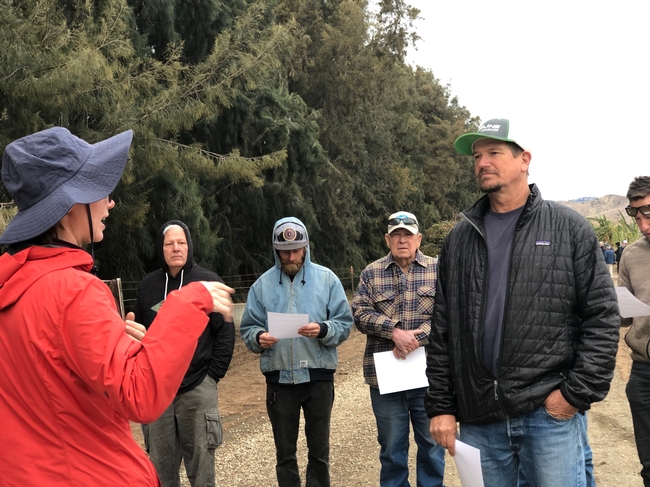
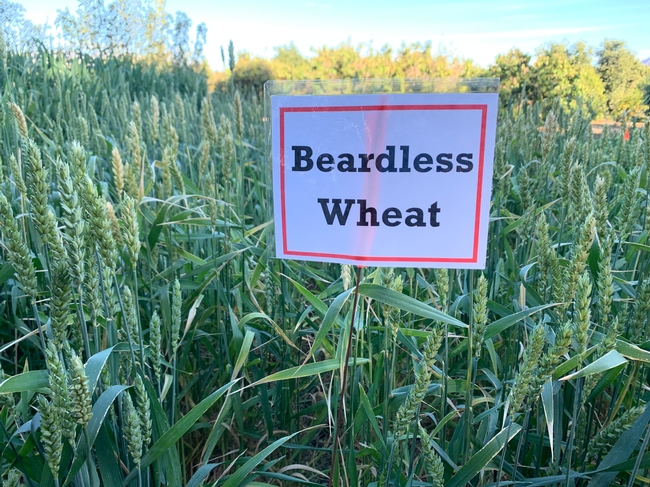
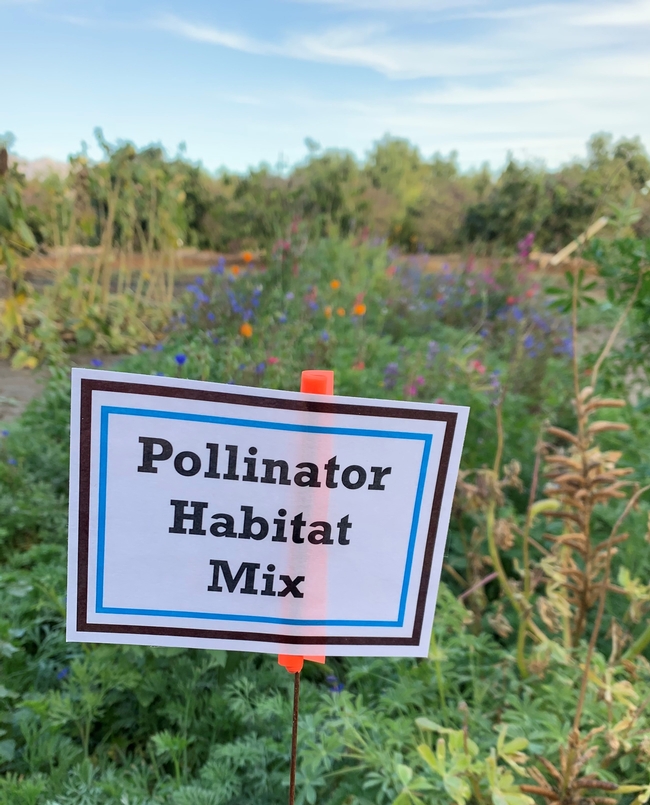
I would like to extend a deep thanks to CDFA, UCANR, the Hansen Agricultural Research and Education Center, Kamprath Seed, and S&S Seed for their generous donation of time, seed, and resources to make this demonstration and field day possible.
Want to know more about what we are up to around the state? Check out this recent press release by UCANR about the Climate Smart Agriculture team.
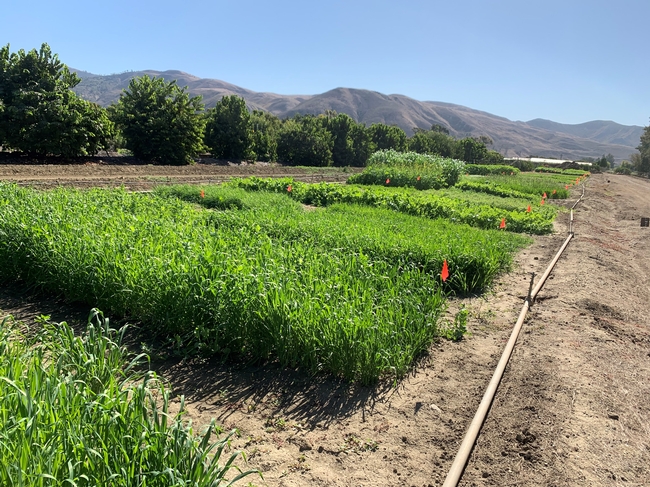
Climate smart agriculture encompasses management practices that increase soil carbon sequestration, reduce greenhouse gas emissions, improve yields and efficiencies, and promotes climate resilience. The California Department of Food and Agriculture (CDFA) supports three funding opportunities in climate smart agriculture: the Healthy Soils Program, the State Water Efficiency & Enhancement Program, and the Alternative Manure Management Program.
In a collaborative partnership, CDFA and UC Agriculture and Natural Resources have teamed up to support 10 community education specialists throughout the state to provide technical assistance and outreach for the climate smart agriculture programs. As one of these technical assistance providers, my role is to promote and support the adoption of these programs in Ventura County. If you are interested in working with me, please contact me at amfish@ucanr.edu.

